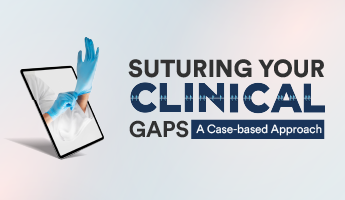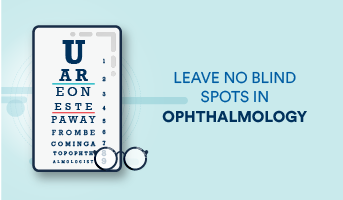The major advantage of passing all three parts of the MRCOG exam is that it leads to the award of the membership of the prestigious Royal College of Obstetricians and Gynecologists. Also, you become an Internationally qualified Obstetrician and Gynecologist and this globally recognized qualification serves as your passport to the pinnacle of the profession.
The basic eligibility criteria to appear for MRCOG Part 1 is to have an undergraduate medical degree or equivalent primary medical qualification. Postgraduate training is not necessary for appearing in the Part 1 MRCOG exam. First-time applicants are required to submit the eligibility application form and get it approved on email by the RCOG.
The MRCOG Part 1 application process is a two-step process.
Step 1: Create your RCOG account and get your eligibility verified and approved.
Step 2: Complete your ‘Expression of Interest Form’.
You will get the eligibility form and expression of interest form on the official RCOG website. After getting your eligibility approved, check the exam timetable, and book a Pearson UVE exam by paying the exam fee.
The MRCOG Part 1 exam is conducted twice within a year, one in the month of January and the second in July. In 2023, the MRCOG Part 1 exam was held on 16th January 2023 and 4th July 2023.
Candidates are only allowed a total of six attempts at the MRCOG Part 1 exam if they desire to be included in the UK Specialist Register, either now or in the future. Candidates who do not want to be included in the UK Specialist Register are allowed an unlimited number of attempts.
The MRCOG part 1 exam assesses the knowledge of the aspirant in 15 core knowledge areas in four major domains.
The syllabus of the MRCOG Part 1 exam comprises these four major domains:
- Cell Function: Includes physiology, endocrinology and biochemistry
- Human Structure: Includes anatomy, embryology and genetics
- Measurement and Manipulation: Includes biophysics, epidemiology and statistics, data interpretation and pharmacology
- Illness: Includes immunology, microbiology, pathology and clinical management
The MRCOG Part 1 exam pattern comprises two SBA Papers, SBA Paper 1 and SBA Paper 2. Both the papers are computer-based tests. Each question paper comprises 100 SBAs (Single Best Answers). The duration of each MRCOG Part 1 paper is 2.5 hours and in between both the papers, there will be a lunch break of approximately one hour.
Some recommended books for MRCOG Part 1 preparation are:
- “Textbook for MRCOG-1: Basic Sciences in Obstetrics & Gynecology” by Dr. Richa Saxena
- “SBAs for the Part 1 MRCOG” by Andrew Sizer & Neil Chapman
- “MRCOG Part One: Your Essential Revision Guide” by Alison Fiander & Baskaran Thilaganathan.
The best online resource to prepare for the MRCOG Part 1 exam is DigiNerve’s ‘Cracking MRCOG Course-Part 1: Comprehensive Course’ by Dr. Richa Saxena. The course provides you with strategic preparation, discussion on important topics, new advances, management guidelines, exam pattern-based mock papers, and much more. The course features include concept-based video lectures, discussions of past 5 years’ papers, SBAs, HYQs, IBQs, Lecture Notes, Benchmark trials, and regular interactive live webinars. You can also enrol in DigiNerve’s ‘Cracking MRCOG Part 1: Mock Exam’ by Dr. Richa Saxena for practice and evaluation.
Effective tips to prepare for the MRCOG Part 1 exam are:
- Preparing a realistic MRCOG Part 1 study plan according to the syllabus and exam date is the first task to be done.
- Stick to reliable and preferred MRCOG Part 1 study resources such as MRCOG Part 1 textbook, MRCOG Part 1 Online course, webinars, discussions on important questions, etc.
- Solving Mock Test papers will boost the preparation to the next level and will help in self-evaluation.
- Starting revision before a month for the exam is highly important.
One should structure their revision process using the following strategy:
- Understand the exam format and choose the MRCOG Part 1 study resources wisely for revision.
- Solve the MRCOG Part 1 Mock Papers every alternate day 2 months before the exam or you can enroll in Cracking MRCOG Part 1-Mock Exam for the same.
- Go through the Green top guidelines, TOGs, SBAs, and Reading lists available on the RCOG official website.
- Go through the exam guidelines and Pearson VUE test guidelines properly before the exam.
Pediatrics is a highly booming and promising field to specialize in, especially for the one who loves to deal with children. Pediatrics is an in-demand field and has greater scope for skilled professionals as there is an increase in a number of healthcare units and a huge concern to decrease the infant mortality rate in India. A pediatrician’s career provides them the chance to carefully examine basic to complicated clinical issues in children and equips them to deal with medical problems.
The minimum eligibility criteria for pursuing PG in Pediatrics is the completion of an MBBS degree with a minimum of 50% aggregate along with the successful completion of one-year rotational internship. Additionally, you must crack the NEET-PG or INI-CET entrance examination with a competitive score to get admission to the postgraduate courses.
No, you cannot pursue MD Pediatrics after BAMS. To be eligible to get admission into MD Pediatrics, you need to complete MBBS undergraduate degree. After pursuing BAMS, you can pursue a postgraduate degree in Kaumarabhritya – Bala Roga in Clinical Specialty.
There are approximately 3281 MD Pediatrics seats in India. Admission to all these seats is done through INI-CET or NEET-PG entrance examination.
Pediatrics is a growing and extremely lucrative area of medicine. A Pediatrician’s salary in India typically ranges from 10-15 lakh per year at first, which escalates based on numerous criteria and the level of expertise. Geographical location, place of employment (whether in the public or private sector), experience level, specialization, healthcare organization, and other variables all have an impact on the pay scales of a pediatrician.
First and the foremost thing to check while selecting the best college for MD Pediatrics in India is to check the accreditation by the Medical Council of India (MCI). Then, you must check the NIRF ranking of the college and the available labs and facilities available to learn on practical grounds. The hospital or medical facility collaborated with the medical college must be well-facilitated with all the learning requirements of medical students.
The best Pediatrics books for medical students pursuing PG are Nelson Textbook of Pediatrics, Piyush Gupta’s PG Textbook of Pediatrics, Harriet Lane Handbook, IAP Color Atlas of Pediatrics, IAP Textbook of Pediatric Neurology, Piyush Gupta’s UG Textbook of Pediatrics, AIIMS PICU Pediatrics, Pediatric Drug Doses, and Textbook of Pediatric Infectious Disease.
To supplement college learning, medical students can subscribe to a good online PG Pediatrics course. Pediatrics MD course is among the best online pediatrics postgraduate courses in which you get access to highly illustrative video lectures and case demonstration sessions by eminent faculty. Additionally, you are provided with benchmark trials, self-assessment questions, notes, drug formulary, chat shows, and a lot more.
The effective ways to study Pediatrics in PG include referring to standard textbooks, attending all the case demonstration sessions, gaining experience through ward postings, and engaging yourself in conferences, seminars, webinars, and workshops. Enrolling in a PG Pediatrics online course will benefit in studying Pediatrics as it provides access to video lectures and case demonstrations and discussion sessions by top Pediatricians of India.
No, it is not necessary to pursue a DM in Pediatrics after MD in Pediatrics, but yes, it is highly preferred to go with the super specialization to become a superspecialist.
There is a wide range of career paths after completing MD in Pediatrics in India, for example, becoming Pediatrician at any government or private healthcare facility, Researcher at any research institute or pharmaceutical, Academician along with practicing as a Pediatrician, or can also pursue a super specialization in any Pediatrics specialty such as Pediatric Cardiology, Pediatric Oncology, Pediatric Hematology, Pediatric Neurology and more. The job profiles associated with these include Pediatrician, Neonatologist, Pediatric Intensivist, Clinical Research Associate, Lecturer/Professor, Medical Writer, Pediatric Oncologist, etc.
The advantages of working as a pediatrician include a high salary, high demand, flexible working hours, a wide range of career prospects, and most of all highly satisfactory job profile.
Ophthalmology is a medical specialty that focuses on the diagnosis and treatment of eye diseases, visual disorders, and their complications. Ophthalmology as a subspecialty in MBBS includes topics such as the cornea, ocular oncology, pediatric ophthalmology, glaucoma, neuro-ophthalmology, and ocular pathology. The study of Ophthalmology covers the physiology, anatomy, and treatment of all eye-related health conditions. It also includes surgical procedures to treat eyes, for example, in case of glaucoma, cataract, neoplasm removal, refractive surgery, etc.
You’ll be eligible for NEET UG after finishing your higher secondary with the subject PCB. Get into a medical college to begin your MBBS journey, and once you obtain the degree, you can specialize in Ophthalmology. Another way to pursue a career in Ophthalmology after 12th is B.Sc. Ophthalmology or B.Sc. Optometry. You can further do a master’s and doctoral in Ophthalmology after completing a full-time undergraduate Ophthalmology degree.
Make sure you understand the fundamentals of ophthalmology before taking the exam. Getting conceptual clarity is the only way to do so. Access maximum content including lectures, MCQs, IBQs, notes, clinical case discussions, and more to practice for university exams as well as NEET PG. Solving the previous years’ questions proves highly beneficial to score well. Don’t miss out on the important and high-weightage modules and topics, such as lens, cataract, Glaucoma, neuro-ophthalmology, surgeries, etc. Tip! Make mnemonics for memorization.
NEET PG requires a deep understanding of the concepts of Ophthalmology. The subject has a prominent weightage in NEET PG. Therefore, it is important to approach ophthalmology in the right way keeping in mind theory, practical, clinical cases, MCQs, and IBQs to ace NEET PG. Ophthalmology is a high-scoring subject from which direct questions are asked in the NEET PG entrance examination.
To understand ophthalmology better, one must learn from the latest and most reliable content and focus on the basics first. Clinical case discussions, MCQs, notes, and lectures by eminent faculty can help you get your concepts cleared. Understanding history-taking and clinical examination of the eye is very important. Don’t miss out on the practical sessions and discussions to thoroughly understand the subject. A medico must remain updated with the latest advancements in diagnostics and treatment procedures.
MS (Master of Surgery) is a postgraduate degree that requires students to complete their MBBS degree before beginning their MS studies. The Medical Council of India (MCI) is in charge of postgraduate medical education in India, which is mandatory to become a surgeon.
‘SRB’s Manual of Surgery’ is the most popular book amongst MBBS students. It includes the latest concepts of treatment and staging of malignancies. Surgical anatomy has been included wherever necessary. The book contains all the important chapters on general surgery, and the common conditions have been dealt with in detail. The language and writing style is simple to read and recall, and the supporting diagrams and images are easy to memorize—a crucial combination for a student confronting theory and practical exams. This book will be a go-to resource for all surgical difficulties.
Refer to Prof. Harsh Mohan’s ‘Textbook of Pathology’. Attend lectures regularly and never miss practical sessions. Seek assistance from seniors and teachers to know how to attempt questions. Take notes regularly and refer to them while revising. Also, practice MCQs and previous years’ question papers to know the exam pattern and important topics. Develop a clinical understanding with the help of relevant case discussions. You can also access trusted content online for in-depth learning and attempt mock tests to ace exams.
Yes, it is necessary to study every subject taught in MBBS for NEET PG Exam including Pathology. You need to have a solid foundation in each subject to crack NEET PG and pursue post-graduation. The subject has a high weightage in the entrance exam and hence, it is extremely important to clear every concept properly.
Pathology is a 2nd prof subject in MBBS that deals with the study of the diagnosis and treatment of diseases. An MBBS student studying pathology learns about cell injury, cell inflammation, repair, and many diseases and disorders. It starts with simple illnesses like dysentery and fungal infections and progresses to major and life-threatening illnesses including AIDS, rheumatic heart disease, cancers, and herpes. Pathology holds great significance in examining the cause, and origin nature of diseases. It has various sub-disciplines such as Cytopathology, Forensic Pathology, Molecular Pathology, Clinical Pathology, etc.
Scoring high is not so difficult if you like to study Pathology; you just need a strategy to learn and prepare for the exams. You can refer to highly recommended books such as Harsh Mohan’s ‘Textbook of Pathology’ to get conceptual clarity. Make notes to learn the most difficult topics concisely and easily, and solve MCQs and previous years’ question papers. Take help from seniors and teachers in case of doubts. You can watch online video lectures and case studies to understand concepts in depth. Make mnemonics to memorize well. Focus more on the high-weightage modules to score high in exams.
Video lectures assist in audio and visual memory. Lectures including clinical case discussions help to gather multiple perspectives and thus enhance one’s knowledge. Practical learning experience through 3D graphics maximizes retention. Easy access to learning anytime, anywhere, and guidance from top faculty are major advantages of learning pathology online.
When it comes to the best pathology book for MBBS students, you can blindly refer to Harsh Mohan’s ‘Textbook of Pathology’. Another author whose books you can refer to for conceptual clarity in Pathology is Prof. Ramadas Nayak. His books ‘Essentials in Hematology and Clinical Pathology’, ‘Exam Preparatory Manual for Undergraduates Pathology’, and ‘Rapid Review of Hematology’ are some of the most well-known titles.
IBQs and VBQs help a lot in memorization and make learning more interesting. You can find tons of them online to enhance your knowledge. They also help students to clear their concepts as well as score high in examinations while providing them with practical exposure.
Notes help you to recall maximum information in the shortest period. You can rely on trusted notes by India’s eminent faculty that are provided by medical learning apps. These notes are added with images, flowcharts, diagrams, and tables that boost your visual memory for better recollection during exams.
Making notes is much better than underlining in your books. This is because you make the notes according to your convenience, be it the language or writing style. This makes it easier to revise maximum topics in the limited time before exams. Underlining in the book means you will have to go through the large volumes again which will take longer to give you last-minute clarity.
If you want to crack NEET Exam, refer to trusted content by India’s top faculty to clear your concepts. Textbooks and online video lectures along with Qbanks can be your saviors in your journey of becoming top doctors. Ask your doubts from your college faculty and seniors. Besides, you can opt for online MBBS courses that provide you with illustrative notes, lectures, and MCQs for conceptual clarity. Choose a course that will help you to ace the university as well as NEET Exam.
Most MBBS toppers recommend that you must be keen to learn every topic.
Make a timetable that you can actively follow in an organized and disciplined manner.
Avoid procrastination, don’t compile the max for the last. Set aside 2-3 weeks before the exam only for revision. This is only possible if there is conceptual clarity in the subject, otherwise, you will not be able to assess your knowledge enough before exams.
Practice previous years’ question papers to acquire an understanding of the kind of questions that are asked in the exams.
Conceptual clarity is best achieved when you go through clinical case discussions, MCQs, notes, IBQs, and VBQs. You can watch video lectures by eminent faculty such as Dr. Apurba Sastry, Prof. Harsh Mohan, Prof. Ramadas Nayak, Dr. Sriram Bhat, Dr. Archith Boloor, Dr. Santosh T Soans, and many more.
The limits on attempts, if any have been mentioned in the Course Details.
All courses are currently available only in English. However, we will notify as soon as we add any other language.
You can use the Thumbs Up/Down icon on Video Player to give a feedback on any video. In case of thumbs down, you can write your comment as well.
Yes. Speed selection is available at the bottom of Video Player during the video playback.
The subtitles may be added to videos in due course of time.
The change of mobile number or email address should be brought to our attention at care@diginerve.com, as that is linked to your user id.
We may add more content to your existing subscription, which can be accessed without paying any extra charges.
Taking screenshots is prohibited. If done, it will trigger a mail to system admin with your user id.
Notes on DigiNerve can be accessed on your devices only.






























